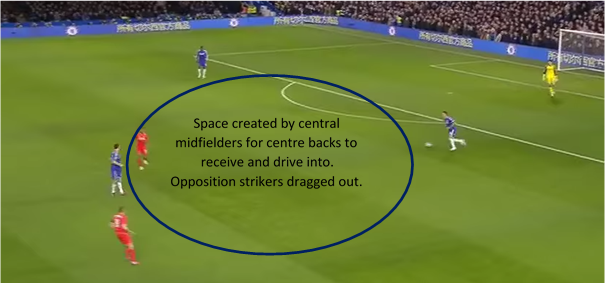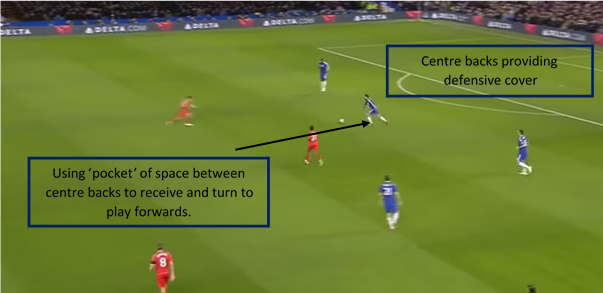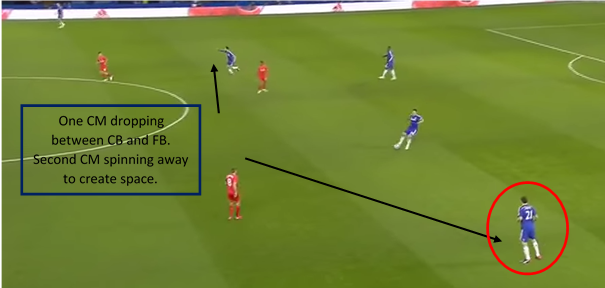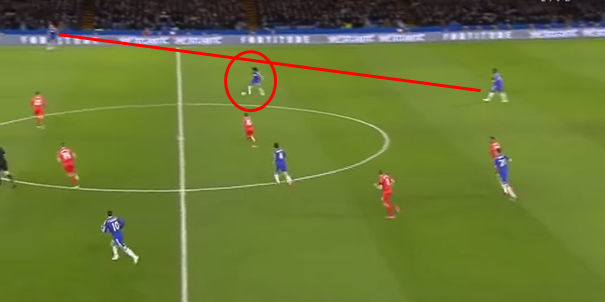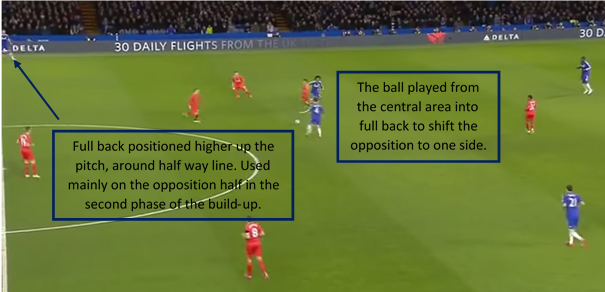By Alex Trukan
Building up from the back has been a buzzword in soccer over the last years. Some teams have applied it effectively, others, however, struggled to understand the purpose of it which has led to many misunderstandings around the topic. Building-up from the back has many variations and types, some involving more direct play using long passes into striker’s foot, some are based more around sequence of shorter passes and patient progress through the thirds (depending on the philosophy of the club, opposition characteristics, pressure applied or result). However, regardless of its variation, the main aim remains the same: transfer the ball into opposition’s half and start creating chances. Therefore, as coaches, it is important to remember, that if the opportunity for a direct pass into strikers arises, it should be taken as soon as possible. At the same time, it shouldn’t be the only option. In this article, some aspects of the more common way of a building-up from the back against medium pressure will be presented.
Central defenders in possession
When the goalkeeper is in possession, central defenders usually become first players available to receive, starting the build-up play. Therefore, they shouldn’t possess lower technical abilities than midfielders or strikers. Unfortunately, that is often neglected and has negative effects on the quality of play. The role of midfielders when the goalkeeper and centre backs are in possession is to move away from the ball and create space for them to receive and play, at the same time providing supporting positions and being ‘connected’ to the ball. As we can see below, the full backs take positions higher up the pitch, around half way line, and only take part in the second phase of the build-up. Starting positions of the centre backs should be ideally on the edges of the penalty box.
Movements of the midfielders to receive
If central defenders can’t find a forward pass to the strikers or midfielder positioned higher up the pitch, the role of midfielders is to provide additional support by dropping and creating an overload situation. One of the basic movements to create an overload in the first third of the pitch is central midfielder dropping to receive between two central defenders. When playing against a team with two strikers that creates a 3v2 situation what can be used to progress into middle third. Midfielder should adjust his body position so he can see the oppositon goal and be able to receive on a half turn.
Another type of midfielder’s movement when building up from the back is dropping down into a ‘pocket’ of space between central defender and a full back. The role of the second midfielder is then crucial - staying away on the other side of the pitch rather than coming short to support. That would create additional space for the midfielder to receive forwards.
That can be also used further up the pitch, in the middle third, what is even more dangerous as midfielder is now closer to the opposition goal and able to distribute the ball to the striker or wingers. As we can see on the diagram below, full back takes a position in midfield.
The role of full backs
If central defenders drop onto the edges of the penalty box to offer passing options when goalkeeper is in possession, the role of the full backs is to take up position around half way line. That will create space for midfielder to drop into, as well as for central defender to receive. However, if that’s not possible, one of the variations of the build-up play can be a full back dropping back to receive, while at the same time, central defenders and the opposite full back push up.
[wpsharely id="2988"][/wpsharely]Apart from that, the full backs should be used in the second phase of the build-up play, usually on the opposition half. The reason for that is preventing possibility for the opposition to apply pressing in wide areas (easier is to lose possession if the ball is wide – less options).
Building-up from the back using combination of short passes requires great deal of patience and technical skills. However, the crucial component remains decision making on when to penetrate and when to pass the ball sideways and backwards and wait for the opportunity to arise for a forward pass.
By Alex Trukan, Development Coach, Nottingham Forest

